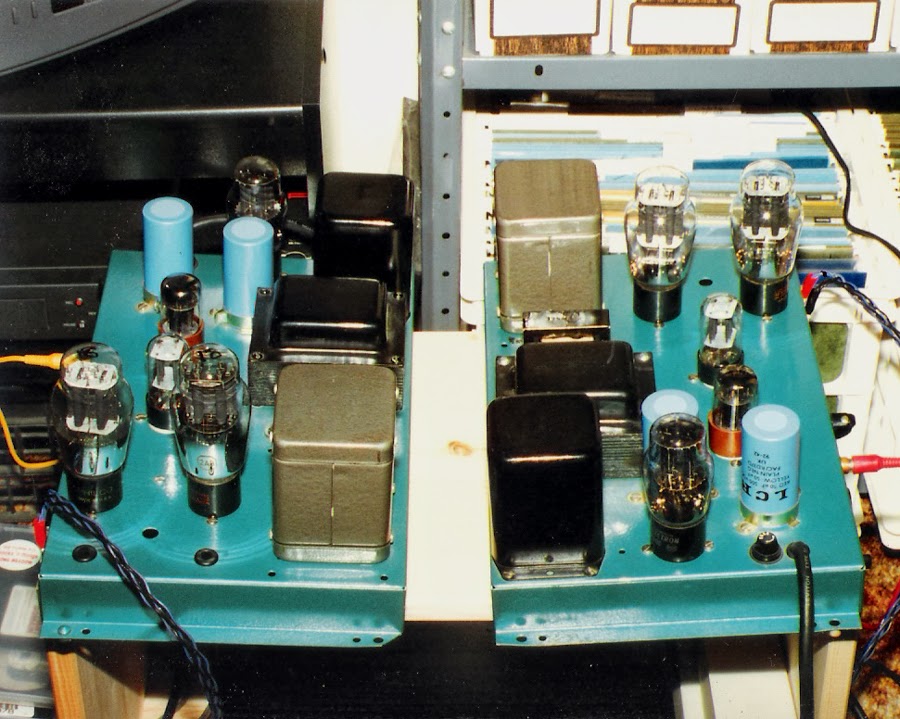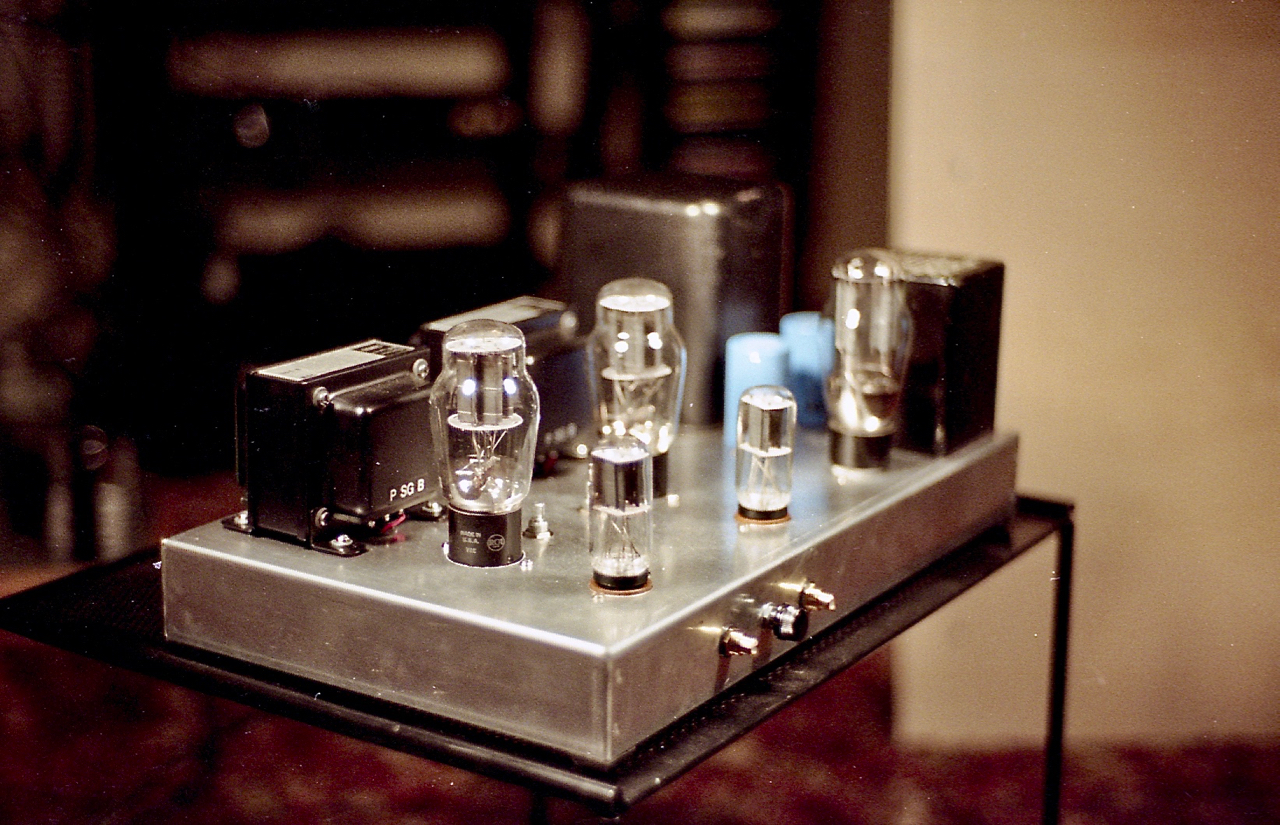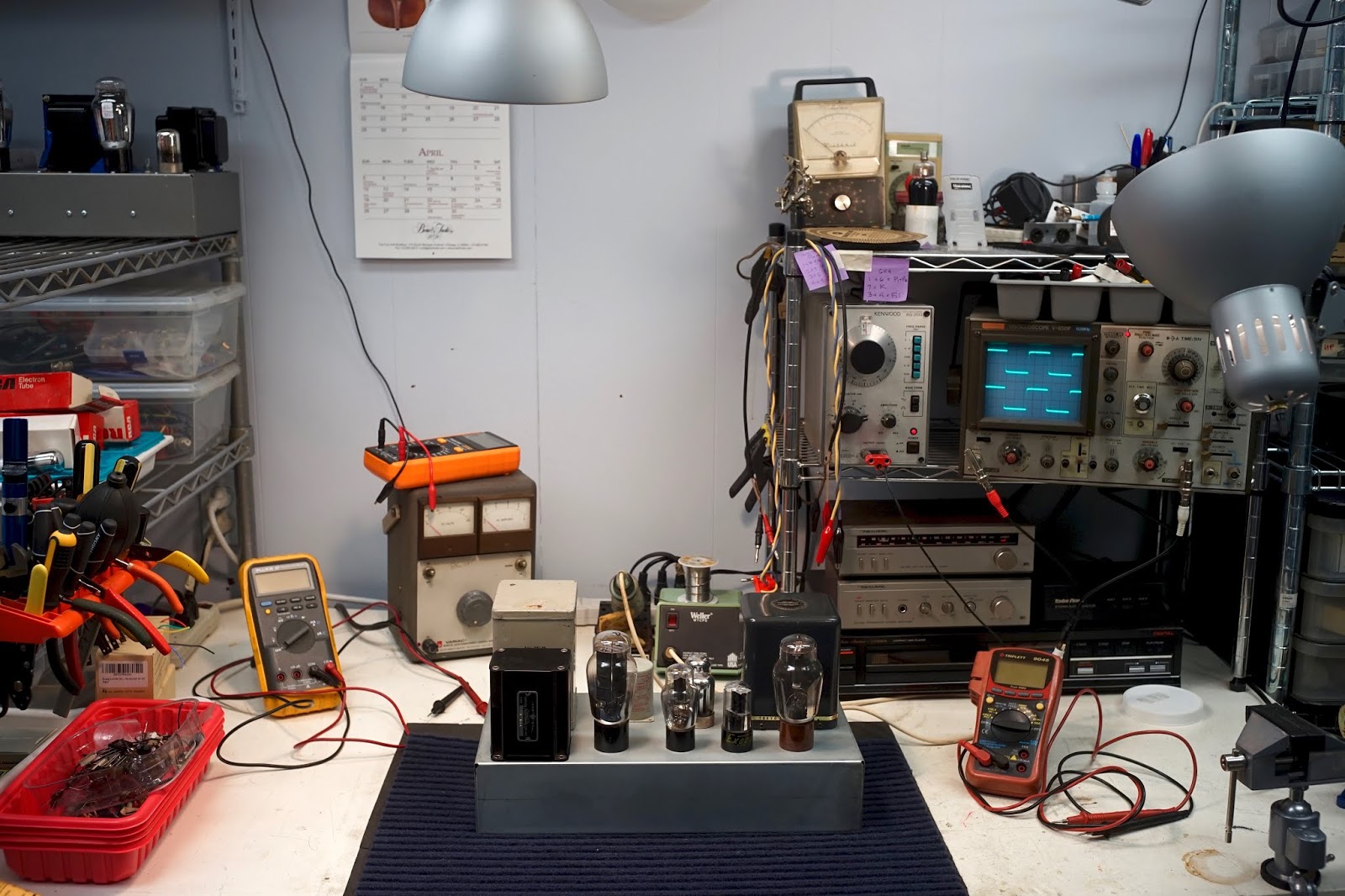I've been dabbling in low powered amplifiers for some time. My first foray was a type 45 based amp (allegedly built by Burgess). I played it on a set of Coral 8" full range drivers mounted in a cabinet using a passive 8" radiator made by Coral. It worked Ok but I felt I could do better.
I have a theory that most people running lower powered amps have not compared them directly to other amps on a level playing field. What I mean by this is that if you have an SET, where is the push-pull version of it that uses the same power tubes and similar construction? Or, where is the push-pull amp that makes the same power? Most of the comparisons I've seen are against amps of quite a lot more power! So I figured to eliminate that as a variable, as well as the type of tube, since most SETs use DHTs while the PP amp it gets compared to is often an indirectly heated pentode based design, probably using feedback and operating class AB. Apples and oranges.
I don't know if this an acceptable apples vs. apples comparison.

I built this pair of Class A PP2A3 mono block amps with a Mullard style driver stage sans global feedback + Peerless 16309 OPTs in the early 90s.

Encouraged by reading Sound Practices, I built this no NFB cascaded 6SN7 > SE2A3 > Tango U808 OPTs. It's essentially half of the PP2A3 amp in terms of topology and power output. I remember the 10 kHz square wave looking similar in both amps. That's as far as I got in terms of testing since I'm not an engineer.
Being a classical musician, my ears chose the SE2A3 because it reminded me more of what I hear in a concert hall. Soon my pair of Spendor LS3/5As were replaced by more efficient Altec 755Cs. I also unloaded the PP2A3 mono blocks to finance higher quality Tamura and Tango SE OPTs.
Twenty five years later, I'm still listening to SE amps ranging from 720mW > 8 watts per channel.
Last edited:

















